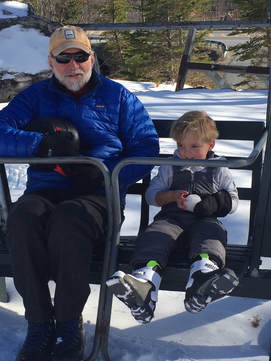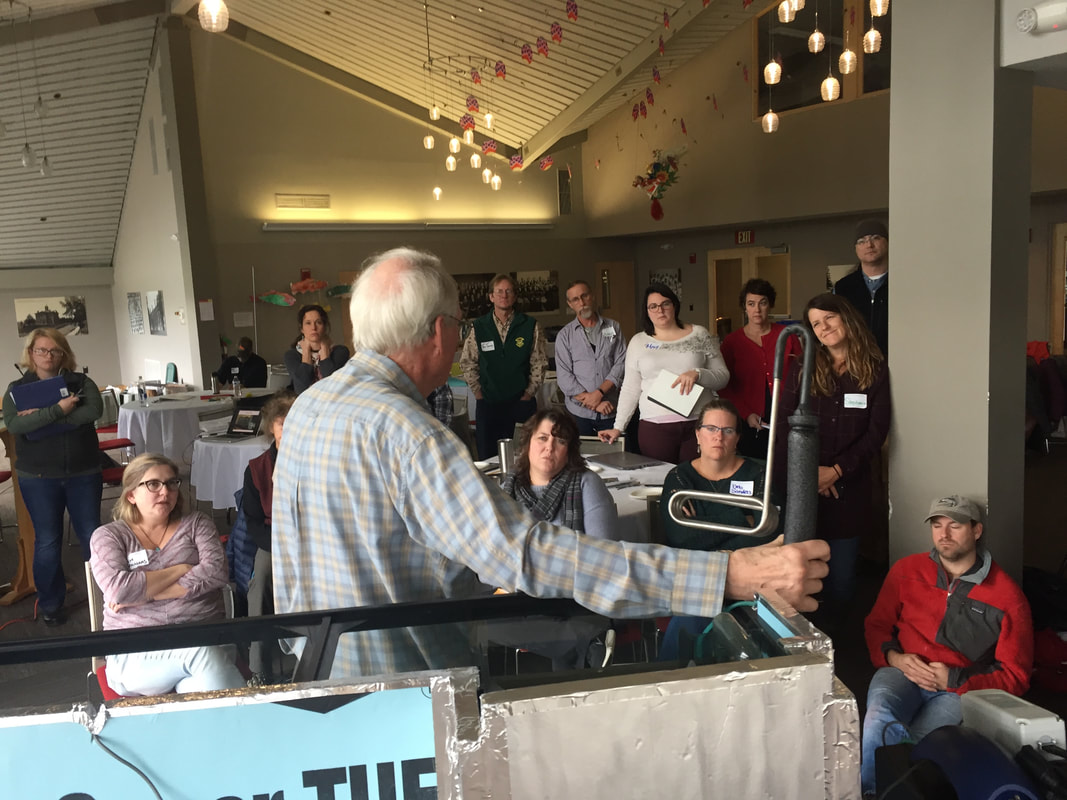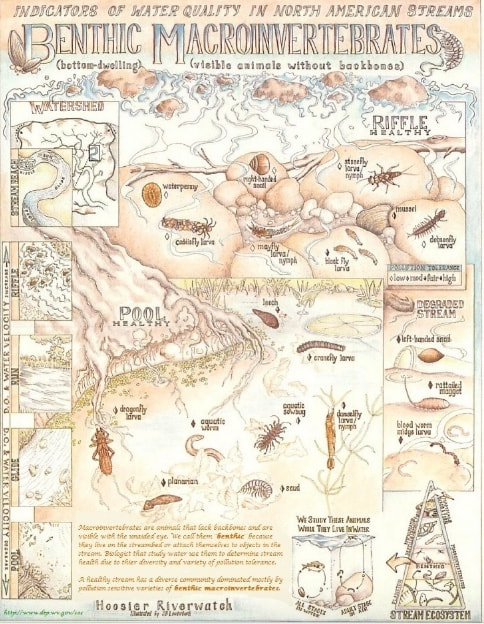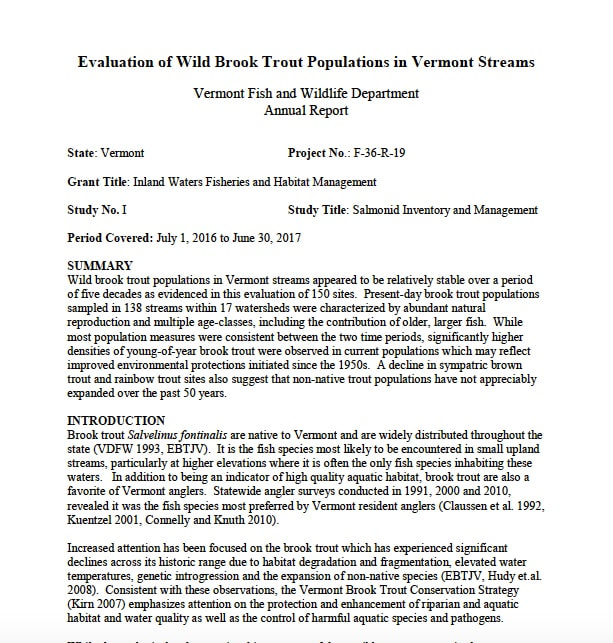 I hope you all had a great Thanksgiving weekend. It's my wife's and my favorite holiday: all about family, friendship, and gratitude--with lots of great food and no need to buy anything other than a few greeting cards to send to those who can't be with you. And then comes Black Friday, more than making up for the absence of commercialism on Thanksgiving. But of course if you want, you can always boycott that questionable American invention and instead save your resources for Small Business Saturday and Giving Tuesday. In the photo: Instead of Black Friday, it was three-year-old grandson Leo Doppman and me on the deactivated chairlift at Bromley Mountain on White Friday.) Successful fourth TIC workshop In 2014, we held the first TIC workshop in Steve Flint's Mary Hogan School classroom and there was more than enough room. Higher attendance forced us to move the 2015 workshop to the MHS library, and even at that we were crowded. Last year we met in the Mt. Abraham Union Middle-High School cafeteria, which was certainly big enough--indeed, actually too big--but its backless Formica stools were not especially comfortable for six hours of sitting. So this year's location, Middlebury College's Kirk Alumni Center, was as they say in the Goldilocks story, "just right!" It was the right size for our 45 attendees, had comfortable seating, and even gave us a beautiful view of the Green Mountains to the east. This year for the first time we created separate 90-minute sessions in the second half of the morning for new and continuing TIC teachers. In the photo above, Bob Wible is demonstrating how to set up a tank to new teachers. Also for the first time, Tom Jones, Fish Health Biologist with the Vermont Department of Fish and Wildlife, not only gave a presentation during the morning but attended and participated in the whole workshop. Thanks, Tom! As I said at the workshop, a program like this can't be successful without a good blend of new and experienced teachers, and the 10 experienced teachers who attended and contributed to our panels and discussions shared invaluable insights with their colleagues. I'm equally grateful to the seven volunteers who joined us as well. New recommendations on tank temperature and swim-up As in the past, at our workshop on 11/18, we discussed the challenges of predicting, controlling, and noticing when our fish swim up. This year we're urging that teachers choose one of two approaches to this process. We make these recommendations for two reasons. First, the greatest source of fish mortality was due to missing the swim-up stage. We think these recommendations will help prevent that problem. The second principal cause of mortality was high ammonia and nitrite levels, and we believe these occurred chiefly because the bacterial additives do not develop adequately at temperatures below 52 degrees. Bob Wible deserves the credit for encouraging us down this, I think more helpful, path. Note: both of the following plans require that ON THE DAY YOU GET YOUR EGGS you use the "Temp and DI record and swim-up calculator" file that is found both in the Google Docs folder and on this Web site. If you neglect to do that, you may go through these procedures at a later date AS LONG AS you have entered daily temperature data into the Temp and DI record and swim-up calculator file. If you're not familiar with this file and, generally, with the process of using temperature data to predict or control swim-up, review this page (on this Web site) and the other pages that it will link you to. Swim-up before winter break
Swim-up after winter break
Benthic macroinvertebrate poster At the workshop, some of you admired the benthic macroinvertebrates poster I had put on display that was published by the Hoosier Riverwatch organization. Here's what it looks like. You can find a digital copy of it at this URL http://dep.wv.gov/WWE/getinvolved/sos/Documents/Benthic/BenthicPoster.jpg. I've also put a JPEG file of it in the Google Docs folder (called "BenthicPoster.jpg"). After a fair bit of Googling and phone calls, I succeeded in finding someone at the Indiana Department of Natural Resources who was willing to send me a whole box of these posters--for free. If I can figure out a way to do so, it might be possible to have one delivered to you in January along with your eggs and fish food. Vermont brook trout research This fall the Vermont Department of Fish and Wildlife released a study comparing brook trout numbers today with those in the 1950s. Some who teach older students might want to assign the report to your students or at least offer it as optional reading to those who seem especially interested in the health of Vermont's brook trout populations. While some have questioned why we should hold the condition of our streams 70 years ago as a standard for comparison to the present, it's hard not to find some good news in the report. Here's a copy of the full report. I've also put it on the Google Docs site, where it's called "Statewide BKT Stream Eval 2017.pdf.".
Latest edition of the manual I have provided links below to two copies of the Manual, one in “.doc” format, the other in “.docx” format. Use the one that works for your software. Importantly, you will probably find that two pages of the Manual in landscape layout (pp. 65 & 65) will be printed at the end of the document. You’ll need to relocate them to their proper place before assembling the document.For the first time, we've tried to customize the Maryland/DC manual to properly reflect the equipment and procedures/practices we're using.
1 Comment
|
Joe Mark is Lead Facilitator of Vermont's Trout in the Classroom program.In June 2012, I retired after 40 years in higher education, having spent the last 32 years of my career as dean at Castleton. One of the first things I volunteered to do in retirement was to work with a parent-friend to help the Dorset School, where his kids and my Vermont grandkids attend, start a TIC program. Gradually that commitment grew into my current role, which is both demanding and highly rewarding. Archives
December 2019
Categories |



 RSS Feed
RSS Feed
